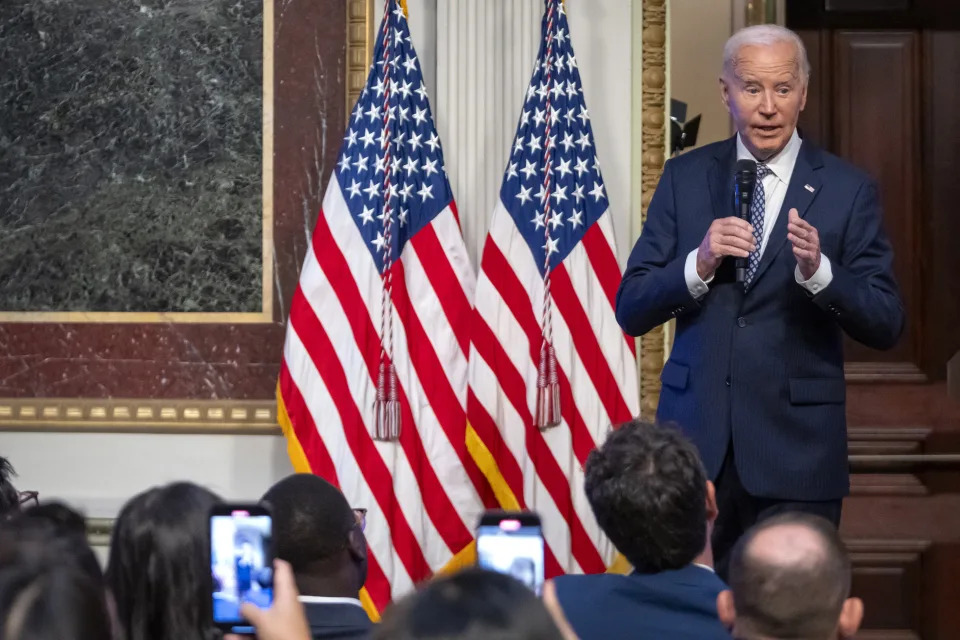Medicare to save $6B in 2026 from the first ever Part D drug pricing negotiations
The Biden administration released the prices of the first ever negotiated Medicare Part D prescription drugs before markets opened Thursday. But the announcement appears to have little impact on stocks in pre-market trading.
The year-long negotiation process will yield savings of $6 billion in 2026, off of net prices paid by Medicare, according to U.S. Health Secretary Xavier Becerra.
That is almost double Congressional Budget Office estimates of $3.7 billion in the first year, and $100 billion in savings over ten years, Becerra said. In addition, the new prices will save seniors $1.5 billion in out-of-pocket costs.
The price list marks the first time in U.S. history that Medicare has negotiated the prices of drugs directly with the manufacturers. Senior administration officials told reporters on a call that the newly negotiated prices apply to all Medicare Part D plans in 2026, including Medicare Advantage plans — making the prices universal for all seniors.
The power to negotiate was part of the passage of the Inflation Reduction Act in 2022. Medicare can target small molecule drugs, typically pills, nine years after entering the market, and large molecule drugs, delivered via IV, 13 years after hitting the market. The Centers for Medicare and Medicaid Services (CMS) has noted that it is particularly interested in drugs that have no generic or biosimilar competition.
Here is the list of the drugs, manufacturers and the negotiated prices:
Eliquis, Bristol Myers-Squibb ( BMY ) and Pfizer ( PFE ): $231 per month
Jardiance, Boehringer Ingehleim and Eli Lilly ( LLY ): $197 per month
Xarelto, Johnson & Johnson ( JNJ ): $197 per month
Imbruvica, Johnson & Johnson and AbbVie ( ABBV ): $9,319 per month
Stelara, Johnson & Johnson: $$4,695 per month
Januvia, Merck ( MRK ): $113 per month
Farxiga, AstraZeneca ( AZN ): $178 per month
Entresto, Novartis ( NVS ): $295 per month
Enbrel, Amgen ( AMGN ): $2,355 per month
Fiasp, Novo Nordisk ( NVO ): $119 per month
The largest industry lobbying firm, PhRMA, which is suing the government over the negotiation process, said the IRA did not do enough to protect patients from unintended consequences.
" As a result of the IRA, there are fewer Part D plans to choose from and premiums are going up. Meanwhile, insurers and PBMs are covering fewer medicines and say they intend to impose further coverage restrictions as the price-setting scheme is implemented," the organization said in a statement.
But the Biden administration has already planned to contribute $5 billion to help balance the anticipated spike in premiums.
The 10 listed drugs are just the first in what will become an ongoing process as more drugs are selected each year. In addition, Medicare will soon start to negotiate for Part B, or prescription drugs that are administered in hospital environments or in doctor's offices.
The newly negotiated prices are, unsurprisingly, lower than the published list prices of the drugs. But experts have warned that looking at list prices is not an accurate way to compare the difference. Instead, the net prices, after rebates and discounts, should be weighed against the new prices — but those are not available to the public.
Top line impact
CMS had until September 1 to reveal the list, and companies have already been in possession of the final prices. Executives recently hinted they were fine with the final negotiated prices during second quarter earnings calls.

Bristol Meyers-Squibb CEO Christopher Boerner, for example, said on an earnings call last month, "Now that we have seen the final price, we're increasingly confident in our ability to navigate the impact of IRA on Eliquis."
The blood thinner Eliquis is a top seller for BMS. CMS Medicare Part D data shows the government spent $15 billion in 2022 on the drug, out of a total $46.4 billion spent on drugs that year . The same year BMS earnings data showed $11.8 billion in sales for Eliquis, and Pfizer, which co-markets the drug, reported $6.5 billion in sales — a combined $17.3 billion.
Wall Street had priced in the impact of the negotiations, so stocks of companies barely moved when the list was first announced last August.
Some drugs, like Johnson & Johnson's Stelara, are less of a concern as it is going off patent next year — prior to the new price going into effect in 2026. The Crohn's disease treatment brought in $9.7 billion for 2022, and Medicare claims it costs the government $2.3 billion per year for Part D.
Other drugs contribute less to the top line for companies, so a lower price in the long term will not have significant impact.
Sales of Novo Nordisk's insulin, Fiasp, for example, totaled less than $320 million in 2023. Compare that to its blockbuster GLP-1 diabetes drug Ozempic, which accounted for more than 40% of the company's 2023 sales and totaled $14 billion. Novo has already indicated on earnings calls that it expects GLP-1s to be targeted to begin negotiations in 2027, which would mark 10 years since Ozempic debuted on the market. But the drug does have competition, with Lilly's Mounjaro, so it remains to be seen if CMS does, in fact, end up targeting GLP-1s in the future.
What's next?
The completion of the first year of negotiations hasn't had a drastic impact on the pharmaceutical industry, but it has had its fair share of drama — notably the companies suing before a drug target list was ever published .
More than a dozen lawsuits were filed against the federal government in hopes of a finding that the negotiation powers unconstitutional.
That includes from the companies themselves, or by the U.S. Chamber of Commerce and the largest industry lobbying firm PhRMA. To-date six of the 15 lawsuits have been dismissed , some of which are being appealed, upholding the Biden administration's right to negotiate. The lawsuit by PhRMA is awaiting a change in location, after a Texas judge dismissed the case saying his court lacks jurisdiction. No new location has been selected.
As the process continues, and as the government expands to include Part B drugs (more complex or administered by health care professionals), experts and insiders expect a more pronounced impact on the industry in years to come.
To counter criticisms of its pricing, industry insiders point to the lowered cost trend in recent years in net pricing, rather than a focus on list pricing which is often never paid. The latest data available shows that in 2022, price increases of drugs annually reached 15.2 %, compared to 11% the prior year, but net prices dropped by 9%, for the fifth consecutive year .
Anjalee Khemlani is the senior health reporter at Yahoo Finance, covering all things pharma, insurance, care services, digital health, PBMs, and health policy and politics. Follow Anjalee on all social media platforms @AnjKhem .
For the latest earnings reports and analysis, earnings whispers and expectations, and company earnings news, click here




